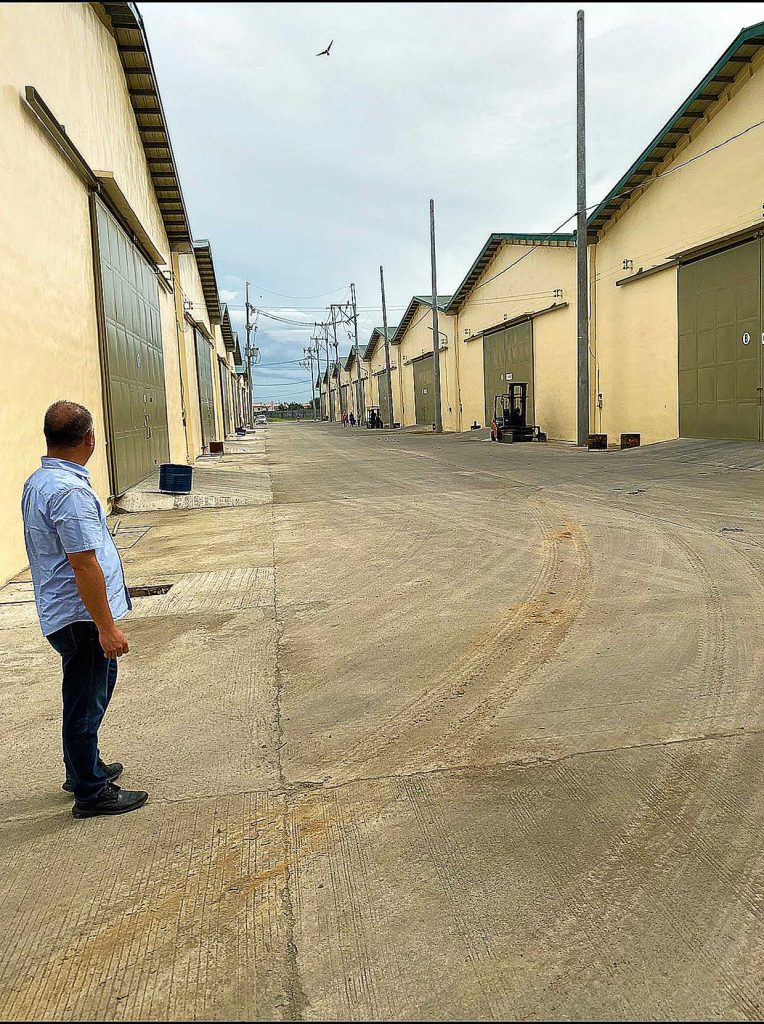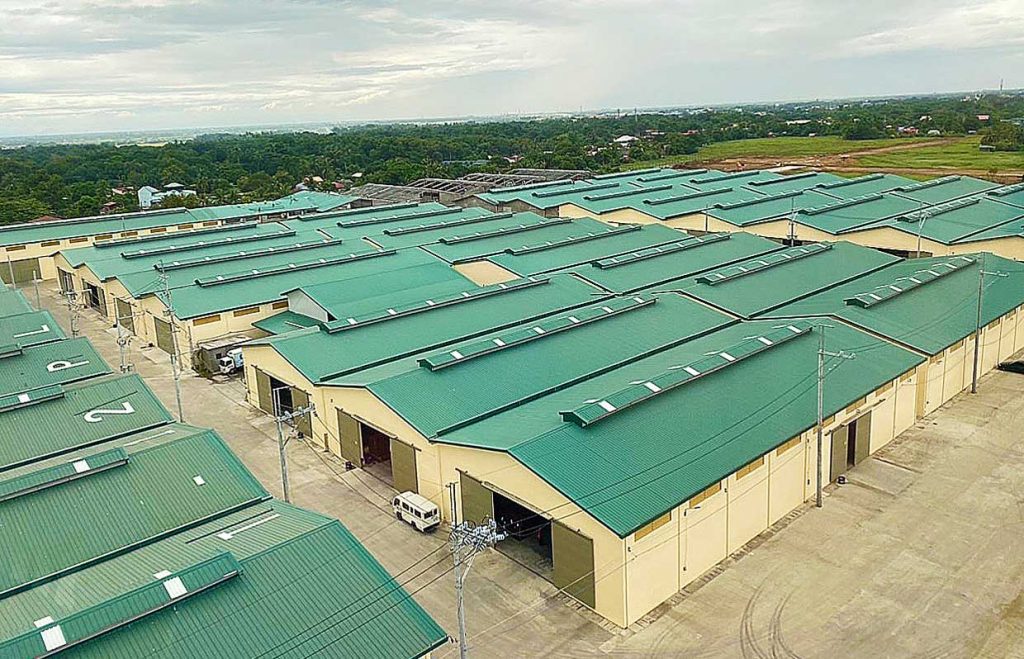Opportunities from the growing cold storage needs and the expanding e-commerce landscape are boosting demand for logistics space.
The Philippine e-commerce industry has been growing in recent years. But with the COVID-19 pandemic, growth has accelerated as consumers are now turning to the digital marketplace to buy the things they need.
As e-commerce grows, so will the logistics market, experts said.
In its report The Evolution of Philippine Logistics: A Case for Better Quality Logistics, property consultancy firm Jones Lang Lasalle (JLL) Philippines said the logistics sector remains resilient even with COVID-19.
“Despite the presence of headwinds posed by the pandemic such as the holding of end-user demand, the slowing down of delivery, and the disruptions in the global supply chain, the Philippine logistics sector shows signs of resiliency,” JLL Philippines said in the report.
Opportunities from the growing cold storage needs and the expanding e-commerce landscape are indeed boosting demand for logistics space.
JLL Philippines forecasts a 56-percent growth in demand by the end of the year. This is seen to grow by 118 percent by 2030.
“The outlook requires that a sustained improvement in e-commerce platform should take place along with the growing trade balance with other countries and favorable manufacturing sector,” said Janlo de los Reyes, head of research and consultancy at JLL Philippines.

SUPPLY
Thus, logistics space developers and operators should adapt with the evolving demand and build modern facilities to achieve the projections, De los Reyes added.
As of the first quarter of the year, existing logistics stock in the Philippines stood at 1.7 million sqm. Dry storage make up 66 percent of the existing supply, while cold storage and cold and dry storage contribute 21 percent and 12 percent, respectively.
In terms of new supply, about 424,000 sqm is set for completion by next year, most of which are in the Central Luzon and CALABARZON areas, which are the key gateways to the North and South of Metro Manila.
“These regions remain as attractive industrial and logistics corridors,” JLL said, adding that this is further supported by the ongoing and upcoming infrastructure projects that are expected to improve connectivity in the country.
BETTER FACILITIES
JLL Philippines director for industrial and logistics Tom Over said clients are demanding better-quality facilities such as high-specification warehouses that utilize technology and digital tools.
“The logistics sector is currently seen as the evolving asset class in the Philippines, with a number of established developers looking to increase their exposure in the sector,” he added.
Among the recent notable transactions in the logistics market are Nestle’s north distribution center in Tarlac and Metropac Movers’ modern logistics center in Laguna, which is set to open by the second quarter of 2021.
Zalora is also operating its e-fulfillment center in Muntinlupa City, right at the exit of Muntinlupa-Cavite Expressway.

RELOCATION
As the demand for logistics increases with the growth of the e-commerce market, JLL pointed out that e-commerce players now have larger space requirements.
Over emphasized that relocation into bigger facilities outside of Metro Manila is a current trend in the market.
He added that rising rental values is also another reason for relocation as areas outside of Metro Manila, like the CALABARZON area offer lower rental rates.
In line with optimizing costs, Over also highlighted that consolidation of facilities is another trend seen among logistics players. Operators are requiring larger warehouse spaces in a single site, instead of multiple smaller facilities across geographies.
“This enables operators to maximize their investment in real estate and technology, and to have better control in delivery and returns through a single point in their distribution chain,” JLL said.
COLD CHAIN MARKET
Apart from the e-commerce market, the cold chain market is another driver of logistics demand.
“Specifically, cold storage observed a potential outward shift in demand for food logistics due to e-commerce grocery as an integral part of the ‘next normal’ requiring for more publicly refrigerated facilities,” JLL said.
The Cold Chain Association of the Philippines (CCAP) said there would be a cold storage supply shortage amid the pandemic because of delays in construction of projects.
It added that there were not enough facilities that could cater to the increasing local production and imports, primarily perishable food products.
In health care, demand for cold storage is seen in growing with the clinical trial of drugs, vaccines, and distribution of health-care products, noting that temperature control is critical in both clinical trials and vaccine development; slight temperature changes can alter the fragile biologics of drugs.
“The increasing scale of production of temperature-sensitive products pushes the demand for cold chain solutions,” JLL said.
TI2 POLO LAND
One emerging player in the logistics space is the Wongchuking Group’s T12 Polo Land which currently has 56 warehouses that are about 1,000 sqm each in Guiguinto, Bulacan.
“Luckily, during the pandemic, business went on as usual, as demand did not go down. There was still a high demand for warehousing. We have a very diverse set of locators in T12. We have locators in the furniture business, logistics business, consumer goods, and agriculture ,” said Caesar Wongchuking, director of the company.
The company has plans for expansion which will be based on the demand in the market.
“We still have 15 hectares of unutilized land and if demand persists, we look at expansion as a strong possibility,” said Geof Gadiana, T12 president.
GEOGRAPHY, CONGESTION POSE CHALLENGE
Despite opportunities seen for the Philippine logistics sector, there are several challenges such as the country’s geography and road congestion.
JLL said given the country’s archipelagic nature, connectivity and accessibility around various islands pose difficulty for logistics across the Philippines’ 40,000 km of coastline.
Another challenge is road congestion.
The COVID-19 pandemic is one of the biggest challenges as well as the lockdowns delayed the expansion of some developments.
LOGISTICS TO REMAIN RESILIENT
With its share of challenges and opportunities at the horizon, JLL described the logistics sector as an intriguing asset class in the Philippines given its resiliency amid the pandemic.
“But despite the optimism toward this asset class, its nascent stage with limited forward views serve as a caution for prospective logistics players and allied industries,” JLL said.
While logistics demand is seen to be lower by the end of the year, due to the impact of the pandemic, JLL sees a rebound in 2021 given the pipeline build-up due to deferred transactions, with demand seen to average 160,000 sqm per annum in the next 10 years.
This expected growth shows the resilience of the logistics sector, an asset class that has a lot to look forward to in the coming years.
